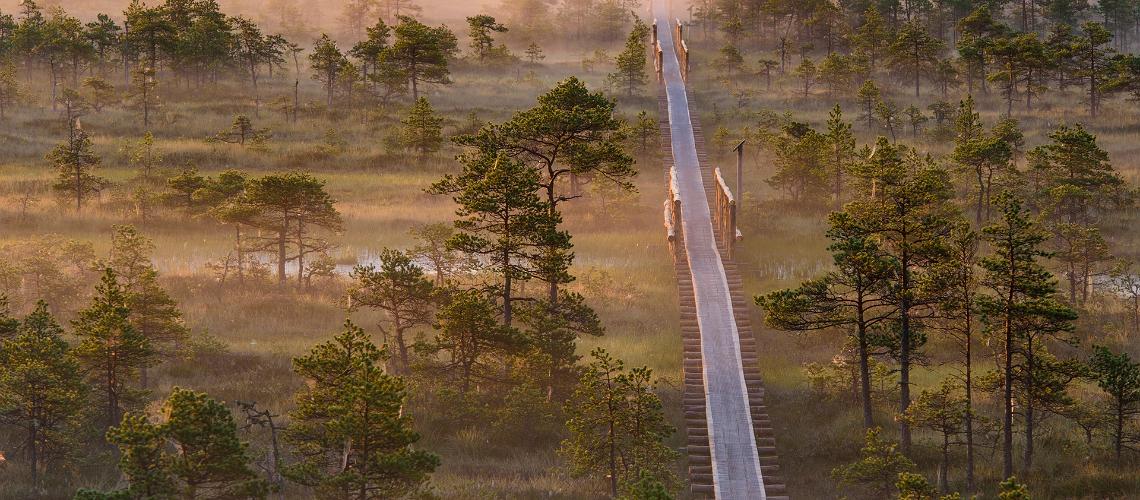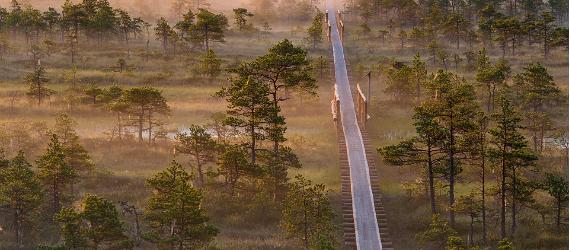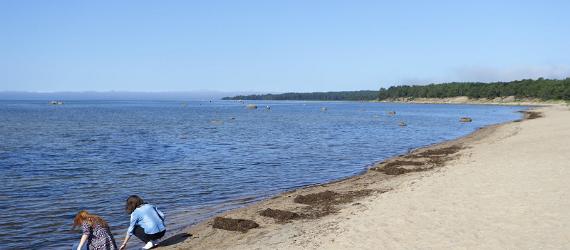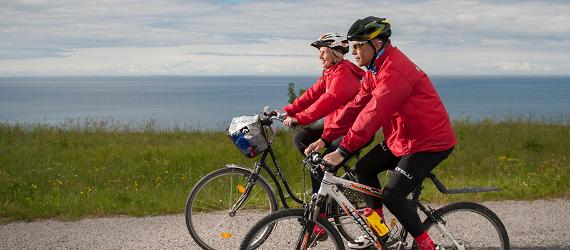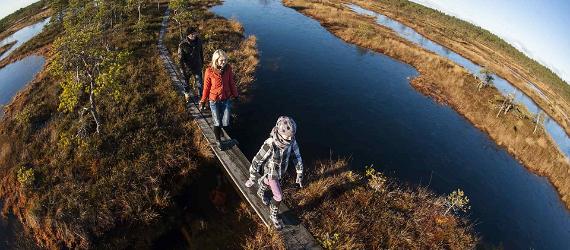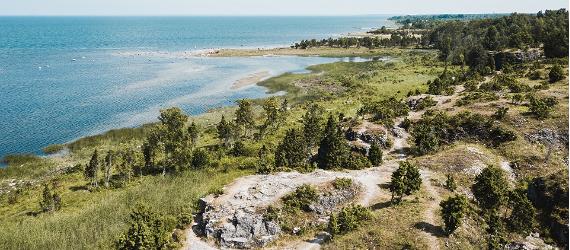National parks
Explore the untouched forests, hidden bog lakes, and long, winding coastlines of Estonia’s six national parks. Get lost in the wilderness — and then find yourself back in civilization in the blink of an eye.
Despite the country's compact size, each national park has its own unique identity. In Western Estonia, you’ll find coastal and wooded meadows and dozens of small islands and inlets — wade through shallow seawater and enjoy incredible sunsets. To the east, you can marvel at primeval forests, vast salt marshes, and the fascinating cultural landscape of Setomaa and the Old Believers. Estonia's climate also varies by region — flowers bloom under a warm spring sun in the west, while skiers hit cross-country trails in the east.
The European Federation of Protected Areas (EUROPARC Federation) has recognized three Estonian national parks—Lahemaa, Matsalu, and Soomaa—for the development of sustainable nature tourism in their respective regions.
As a visitor, you can preserve the pristine wilderness of Estonia’s national parks by traveling with a local guide, who can enthrall you with tales of local life and lead you to the parks’ most remote corners.
Of course, you are always welcome to venture out on your own — go for a hike, plan a picnic, or spend a few nights sleeping under the stars. Head to the parks’ nature centers before setting out for the day or plan your trip from home by visiting their pages online.
Discover Estonia's national parks
Lahemaa National Park is the largest and oldest national park in Estonia and one of Europe's most important forest protection areas. Here you will find rocky and sandy coastal areas and sediment plains winding along the peninsula. Forest, wetland, and coastal ecosystems exist side-by-side with geological, historical, and architectural monuments. Extensive forest paths provide easy access for picking berries and mushrooms.
As an important feeding spot for birds migrating between the Arctic and Western Europe, Matsalu National Park is one of the most famous European bird-watching sites and a true paradise for nature lovers.
Soomaa National Park is home to massive wetlands, but it has become the most famous park thanks to a natural phenomenon called 'the fifth season.' During this flood time, up to 17,500 hectares of lower forests, roads, and yards can only be navigated by water. It's a perfect place for a canoe trip.
A haven for seal and orchid lovers, Vilsandi National Park is home to Estonia’s largest grey seal colony and many kinds of seabirds. Fossil limestone terraces wait to be discovered, along with the westernmost point of Estonia – Nootamaa Island.
Karula National Park is the smallest national park in the country, cherished for its unique domed landscape formed by glacial ice about 10,000 years ago. There are about 40 lakes hidden between the hills and domes, and a heritage landscape of meadows, marshy grounds and forest stands leaves plenty of space to explore.
The youngest of Estonia's national parks, Alutaguse National Park is the largest coniferous forest and marsh area in the country. With more than half of the park consisting of vast bog areas and 42% of forested landscapes, this park is a sanctuary for wild birds and animals. Several mammals, such as wolves, bears, and lynx, move between Estonia and Russia via Alutaguse's migration routes.
On the same topic:
See & Do
Information on search results display in Article 12 of the Terms of Use.

















